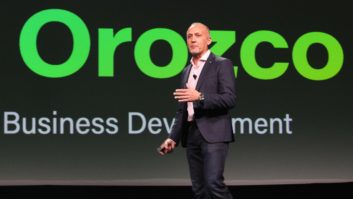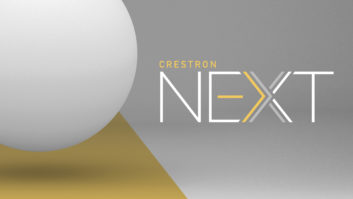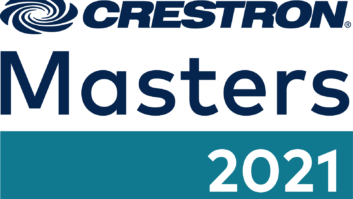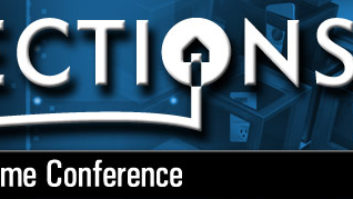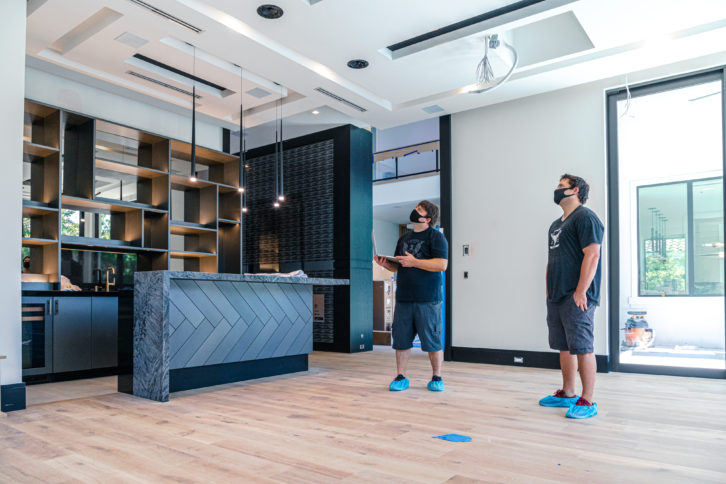
States are beginning to re-open and people around the world are getting back to work, including AV dealers. While new construction wasn’t affected that much during the crisis, retrofit work took a big hit, as customers simply didn’t want integrators in their homes and, in some states, they weren’t allowed to leave their own homes anyway. This meant integrators had to get creative to keep any revenue coming in and maintain their valuable relationships with customers. For now, things are returning to something resembling normal. However, we can expect to experience additional closures for the foreseeable future until a vaccine for COVID-19 is developed. With that in mind, we at Luxul thought this would be a good time to get in touch with some of our dealers and distributors and see how they successfully adjusted their businesses during the crisis in order to help us all better prepare for an uncertain future.
Q&A participants:
- John Sciacca, Partner, Custom Theater and Audio, Myrtle Beach, SC
- Scott Abel, Director of Quality and Customer, SAV Digital Environments, Bozeman and Big Sky, MT
- Bob Appleby, Vice President and General Manager, ADI North America, Melville, NY
- Matt Montgomery, Co-Owner, TYM Smart Homes & Home Theaters; Co-Founder, com, Herriman, UT
- Greg Montgomery, Co-Owner, TYM Smart Homes & Home Theaters; Co-Founder, com, Herriman, UT
- Brad Montgomery, Cinema Designer, TYM Smart Homes & Home Theaters; Creative Director, com and AVswag.com, Herriman, UT
- Joe Whitaker, President, Thoughtful Integrations, Louis, MO and Dallas, TX
Restrictions during the shutdown have varied greatly by state, and even by city. Where is your business located and what restrictions are/were in place? Was your business considered essential?
John Sciacca: We’re located in South Carolina, and there was never really a complete shutdown ordered for integrators. So we never needed to play the “essential business” card.
Scott Abel: We are located in Bozeman and Big Sky, MT. Fortunately, we were considered an essential service; you can read our public-facing message here. But just like the rest of the country, we had restrictions put in place, from social distancing to select businesses or sectors having to close, inevitably forcing us to put a hold on certain projects.
Bob Appleby: ADI’s global headquarters is in Melville, NY, and we have 108 locations across North America, and 200+ locations around the world. We put together a dedicated team early on to help us monitor the situation, review local government orders and guidelines, and make any necessary changes to our business. We were considered essential in most markets, so we quickly made modifications in our branches and distribution centers to ensure that customers could safely access the products they need.
Matt Montgomery: Here in Utah, where we’re headquartered, residential construction was classified “essential,” so projects have kept moving forward. However, things have varied greatly on our projects in other states. We have a team that used to travel to these sites, but COVID-19 and travel restrictions led us to contract local help, and we now use on-site video conferencing a lot more to inspect active projects around the United States. We started traveling again, but much less, and with only the most essential people.
Joe Whitaker: We are in St. Louis, MO, and also have an office outside Dallas, TX. While we were considered essential in both locations, the restrictions for each were vastly different. In Dallas, the restrictions were very light. In St. Louis — due to its proximity to Illinois, which has some of the harshest restrictions in the country — the stay-at-home orders were much more strict. Without documentation, you could get pulled over and receive a ticket for being out of your home.
For the latest updates on how the coronavirus is impacting CI, visit our information hub and sign up for the Residential Systems daily newsletter.:
What impact did these restrictions have on business as usual for you?
John Sciacca: The restrictions in place mainly applied to what our customers were comfortable with us doing, and, more importantly, what our employees were comfortable doing. There were a couple of weeks where we had work to do, but our employees didn’t feel comfortable doing certain things.
Scott Abel: With everyone’s health and safety at the forefront of our minds, we followed these restrictions closely and worked to assure all of our employees, clients, and partners were safe. Whether that meant pausing a project or reducing the amount of staff on certain projects, we were very cautious and cognizant. We were able to quickly identify the positions that could effectively work remotely and implemented this early on. As a company we were all very familiar with using Skype, Zoom, and other platforms to continue regular communications, so this was an easy adjustment for us to move to virtual meetings and conversations.
Bob Appleby: COVID-19 created a very fluid environment. Our main focus was keeping our customers and team members safe, while continuing to maintain business operations. We quickly made modifications in our branches and distribution centers to ensure that customers could safely access the products they need.
Greg Montgomery: We’ve felt it more in states where construction was deemed essential, but travel and COVID-19 hotspots made being there in person tricky. Local help and video calls have been a huge help. We’re grateful for all our industry friends who’ve been there to assist us.
Joe Whitaker: Business as usual didn’t exist anymore; everything we knew was gone. We basically had to start over and shift our processes and procedures very quickly to adapt.
What measures did you take to maintain a revenue stream?
John Sciacca: We didn’t have to do anything proactively, as we had plenty of people calling for service and also did one major prewire and shade installation project during the quarantine.
Scott Abel: We formed a committee to manage, monitor, and come up with ideas that offered safety, convenience, and solutions for everyone involved, from clients and partners to employees and manufacturers. These ranged from virtual meetings with clients to virtual offerings for partners, such as continued education credits for partner architects and designers.
Bob Appleby: In addition to our Pickup Anytime service, we implemented numerous changes, like curb-side pickup, to minimize interactions while continuing to deliver product to customers in a safe way. We encouraged online ordering and provided how-to videos to help customers take advantage of our Digital Branch, which we had made a significant investment in this year. Since the start of COVID-19, we saw a notable uptick in the number of our customers using our Digital Branch. We worked closely with our supplier partners to offer sales and promotions on products across all categories, and proactively monitored inventory positions to mitigate any potential supply chain delays. We also made sure that our service offering matched the “new way” people are working, whether from home or contactless transactions with paperless billing, extended return policies, online returns, shipping options to reduce foot traffic, and more.
Brad Montgomery: Actually, we’ve seen a slight uptick in business. It seems like people want something hopeful to focus on, like planning a dream home or home theater. And it’s not just here in the U.S., but internationally. I think the desire to focus on something post-pandemic, that’s positive and creative, is universal. We’ve been lucky; not everyone has been as fortunate. I’m reminded of this every day.
Joe Whitaker: We evaluated all of our product categories, asking ourselves which were actionable — what could we deliver without having to go into customers’ homes? We knew that networking solutions would have a big role to play, as people locked in their houses were quickly going to realize that their Wi-Fi wasn’t that great with their whole families working and going to school from home. So we picked a couple of lines — including Luxul networking products and Ring doorbell cameras — and developed drop-at-the-door, pre-configured solutions. For Luxul’s Epic 3 wireless router, we even made a video of us doing the configuration in full PPE, wiping everything down, re-boxing it, sealing the box, and then including the video with the router. After dropping the products off, we could walk customers through any further necessary steps from outside through a screen door or over FaceTime. This approach was huge in allowing us to continue to build revenue, and really saved the company during the harshest time of the lockdown, when PPP checks weren’t being issued yet. Right now, we’re preparing for next fall, and we’re going to expand our delivery service to include high-end home theater and media room gear, as we’ve figured out that family movie night has become a big thing when the theaters are shut down. People still need to be entertained.
Related: 10 Ways to Revitalize Your Business
Did you do anything unique to keep your customers engaged with your business? Do you have any advice for other integrators on how to do this?
John Sciacca: We’ve been in business for 25 years, so we didn’t need to do too much for the phone to continue ringing.
Scott Abel: Yes, we doubled our social engagement and web presence, increased outreach programs, and made sure our message was highly visible and available during the pandemic, specifically when it related to system maintenance and client service availability. One “unique” approach we took, which seemed to really resonate with people, was offer advice, expertise, and our help during the crisis versus trying to sell them something. For example, instead of trying to sell people video conferencing equipment or security systems, we posted curated articles by in-house staff that were meant to give people advice or information that could help them, versus making a dent in their checkbooks. In turn, this also brought products to light that people may not have known about.
Bob Appleby: Communication with customers was especially important during this time. To help keep them informed, we created a dedicated webpage that included real-time information on how we modified and improved services to help meet their needs, and information on some of the relief and loan programs available to them. In addition, we sent localized email campaigns to customers that included branch updates and product promotions. And we utilized our social channels as another way to engage with them.
Matt Montgomery: We made sure clients knew we were still open for business and there to help them. We did this locally, nationally…everywhere.
Brad Montgomery: I made a design for AVswag.com — “Keep Calm and AV On” — based on the British WWII mantra/graphic. It was mostly something I did to make myself feel better, but people have been buying it on stickers and shirts. So the message resonates. CI/CE can be a roller coaster of a business in the best of times, but we will get through this.
Joe Whitaker: One thing I did that turned out to be pretty popular was a series of videos on Facebook called the Quarantine Diaries, which covered a wide range of topics from family movie night to optimizing your home Wi-Fi network showcasing Luxul network products. In the beginning of the lockdown, I was recording every morning. Eventually I took a less-is-more strategy and scaled back to one video a week. I changed the name to Thoughtful Thursdays and had guests from manufacturers around the industry, like Control4 and Ring. There are many options for staying engaged with customers, and I think social media — whether it be videos or posts with company news — is a very effective one. Another is direct-to-text campaigns. Some company owners don’t want customers to have their personal cellphone numbers, but in times like this, I think that personal touch is important. Messaging should come from the top and be humble, honest, and not fake or over-scripted. One strategy I would avoid is email campaigns. During the pandemic, people were getting slammed with emails, and you don’t want to add to the pile.
Did you have to cancel any live training events? How did you adjust to keep people educated?
Scott Abel: Yes, not only did we have employee trainings that we had to cancel, but we had a 3-day CEU summit on-site at our showroom made up of 16.5 credits for architects and designers that we had to cancel. However, we responded with a virtual summit and took advantage of all of our manufacturer partners’ online trainings for staff. For the summit, we had over 130 people attend, nationwide, and received some incredibly positive responses.
Bob Appleby: For the safety of our customers, partners, and team members, we postponed all our Expo and branch events during this time. But at ADI, we know our dealers rely on us for training, and we were committed to providing them with new opportunities. We teamed up with our supplier partners to offer free daily webinars to help dealers stay up to date on the products creating the most interest across communities. Additionally, we hosted a special online panel discussion with some of our supplier partners focused on helping dealers navigate the pandemic and reposition their businesses for the future. At the same time, we launched our new on-demand training platform — ADI Academy — which offers industry and product training that customers can attend on their schedule, anytime and anywhere.
Matt Montgomery: We are co-founders of goLuckyDog.com, which is an online community for integrators, where they and their teams can stream training courses, masterclasses, and participate in discussions with industry leaders. Pre COVID-19, we shot and filmed things in person, like the course we did with Luxul. For the time being, we’re relying on some creative filmmaking to get the courses made. For instance, the amazing folks at Zigen just produced their LuckyDog course using PowerPoint and Zoom. Down the road, when the situation allows, they’ll fly out and together we’ll film a course with all the bells and whistles. But for now, this is working. Now is a good time for us as integrators to not only be learning, but also to be reminded of the community that’s there for all of us.
Joe Whitaker: All live trainings from our manufacturers and other organizations were thrown out the window. However, many of them quickly made the transition to a digital format, so there was plenty of training available online from CEDIA, AVIXA, Luxul, Control4, and many others. This massive offering of online education was key, because it allowed us to get trained up on new products very quickly. And I hope that this digital trend continues when in-person training comes back, because it’s just much faster. Obviously, there are some hands-on types of things that must be done in person — like rack building or ISF screen calibration — so online training does have its limitations, but for the most part it’s just as effective as being there in person.
If you were able to enter people’s homes for retrofit projects, what did you do about personal protective equipment (PPE)?
John Sciacca: We were able to get gloves, masks, and Clorox wipes, which we used. We contacted our customers before every job to make sure that they were healthy and actually wanted us to still come to their home; find out how many people were going to be in the home while we were working; and that they would give our technicians space to work — basically leaving them alone in the area where the work was happening. Most people were more than happy to oblige.
Scott Abel: We worked tirelessly to keep everyone safe and comfortable, from making our own hand sanitizer to reducing the amount of people around one another. If we didn’t have the ability to do a certain task safely, we waited until we could. When it came to masks, we acted socially responsible to make sure they were available to hospitals first. So we didn’t require mask usage, but instead followed site rules or client rules put in place very closely.
Greg Montgomery: We were in the process of remodeling our office when things hit, so we started with masks we bought for doing the drywall. Now we all have cloth masks, and ask clients if they are comfortable with us entering the home. Everyone also carries hand sanitizer.
Joe Whitaker: I have been absolutely pedal to the floor on PPE. Unfortunately, making it mandatory for a company during shortages is very difficult. We were fortunate that we had remodeled a showroom last year and had about half a box of N95 masks left. That’s not a lot, but some of our doctor clients showed us how to properly sterilize and reuse them without tearing them up. The elastic bands on those things are a nightmare, but if you pull them off and stick the mask inside a cloth one that opens on the side or with Velcro, it is much more comfortable and you won’t have any bands snagging and breaking the mask. For disposable booties and rubber gloves, you couldn’t buy anything locally, but we got in the Amazon queue for them very early on. We’re still using all of this PPE on every job. And since we don’t know what’s going to happen next, I think all integrators would be wise to stock up on these things now as they become available. It should be no different than keeping a stock of items like connectors and other accessories we use every day.
Related: How to Market In a Down Economy
Knowing what you know now, what would you have done differently during the shutdown, if anything?
John Sciacca: Our number one metric was “what are our techs comfortable doing.” That drove all job decisions we made. Fortunately, with so many years, we had plenty of small and safe service calls (system troubleshooting or installing a new router, WAP, remote, or display) to keep us busy.
Scott Abel: We were fortunate that we were able to act and adapt quickly. We implemented staggered start times for our technicians instead of having them all arrive onsite at the same time, as well as temporarily utilized rental cars to eliminate ride sharing in company vehicles. The only thing we would have done differently, thinking about it, is implement this a touch sooner.
Matt Montgomery: We would have contracted more local integrators, and done it sooner. Our community is amazing, capable, and creative. We wouldn’t have been able to keep up with everything without our industry friends.
Joe Whitaker: When the housing market crashed in 2007, I had an inkling of what was coming beforehand, so I took our 100 percent residential company and diversified into light commercial, and that’s what got us through. COVID-19 was very different; I never expected anything like this. If I had, I would have started figuring out much earlier what we’re figuring out now. One of these things is to make custom integration transactions and deliveries available through the same mechanism that you might order in dinner — a DoorDash for technology if you will. Using the internet, we are trying to adapt our business so that we can do three things no matter what happens next: keep our doors open, keep our employees busy, and keep our promises to our customers. I would have also taken a look at the product lines I could still make profitable and actionable in the event of an extreme lockdown situation. Would there be a way we could still make money? I believe there would be. Have I figured out what that is yet? No. Finally, I would have evaluated my manufacturers and determined what companies and categories are crisis-proof, and how I would get those products. What would the sales chain look like? It would have been great to have thought all of this out pre pandemia, but we’re doing the next best thing, which is to make sure we are absolutely prepared for the next crisis.
What does the future bring? What measures have you taken for business recovery?
John Sciacca: We were fortunate that we were in the midst of about five fairly large projects, so those will be there to keep us going. I fear that if we see a marked slowdown in home building, it will happen in about four to six months from now, and all the work we would be doing simply won’t be there.
Scott Abel: Change is definitely in the air, and we can see the future holds a lot of additional care and consideration for everything. The most important thing we did was keep relationships strong and that is one of the most important factors that will help us all recover.
Bob Appleby: The COVID-19 situation impacted our business, as it did the rest of the industry. However, we expect our business to make a full comeback — and we are ready for that.
Matt Montgomery: The situation forced our hand in many ways. We had to adapt, quickly. It’s been scary at times, but ultimately things are in a good place. We are optimistic about the future of our companies and the industry as a whole.
Joe Whitaker: The future lies in being agile. It will require agility in educating customers so they can make proper buying decisions and use the technologies we’re putting in their homes. Agility will be required in delivery methods, such as walkthroughs on FaceTime or Zoom. And finally, it will be needed to navigate the mess that the next crisis brings. The only way we’ll stay afloat as an industry is to look back to companies who have survived challenging times before. Every time the industry has gone through these periods, there is typically a one- to three-year slowdown. However, during that time innovation continues. So when the slowdown ends, there is a spike in activity. We just have to have the agility to make it to that point.
Related: Worst. Year. Ever?
Anything else you’d like to add.
Scott Abel: This experience wasn’t necessarily a wakeup call, rather a scenario brought to light, proving that preparedness is key. Fortunately, we are a firm that doesn’t skip any steps along the way with anything we do, which in turn makes us prepared for many different scenarios. It was also an opportunity to see things from a different angle, from the products we integrate to the potential of non-mainstream products such as touch-free access control, advanced security, and safety systems like thermal cameras, and so much more. Even video conferencing solutions, which had been a less common request, are now becoming a very hot topic.
Greg Montgomery: Hang in there. You and your team are not alone. We’re an industry of creative problem solvers. We will get through this.
Joe Whitaker: One thing I would personally like to see is the integrator community speaking up for each other more. As a whole we’re a pretty tight community, and a lot of us know each other across different states and cities. Some of us, though, don’t have the people or resources to get out there and promote themselves. I would like to see other companies, including mine, start mentioning those integrators in other states and helping to get the word out. I couldn’t be successful without the help from other integrators, and I think more companies should be able to say the same.
Conclusion
It’s clear that for AV dealers and distributors, no two COVID-19 experiences were exactly the same. One thing they all had in common, however, was that they had to quickly adapt to an unprecedented situation that turned everything they had known upside down. They responded to the challenge in different and often creative ways, and have varying expectations for what the future of the AV industry might look like. Whatever happens next, by sharing their stories they are helping us all be better prepared to not only survive an uncertain future, but prosper in it.
Mike Grubb is the vice president of marketing for Legrand | AV – CI, a leading smart home solutions provider. He can be reached at [email protected].
